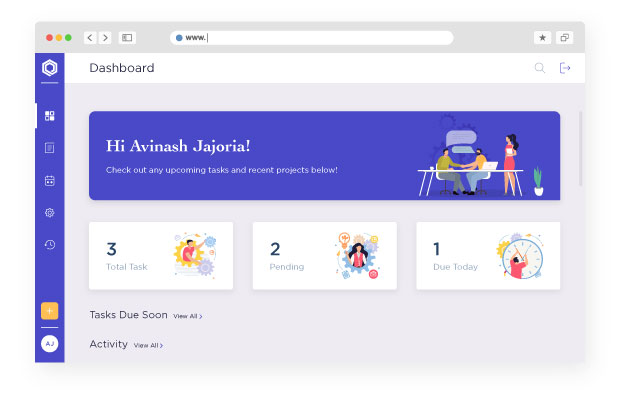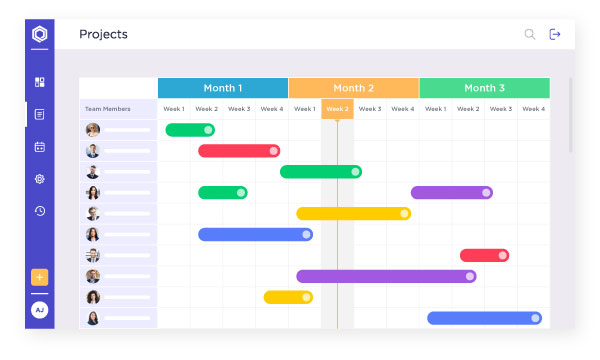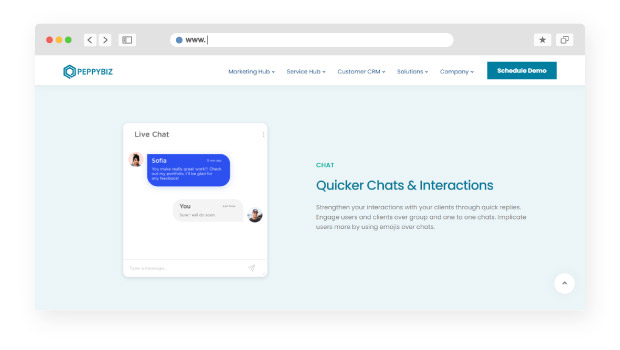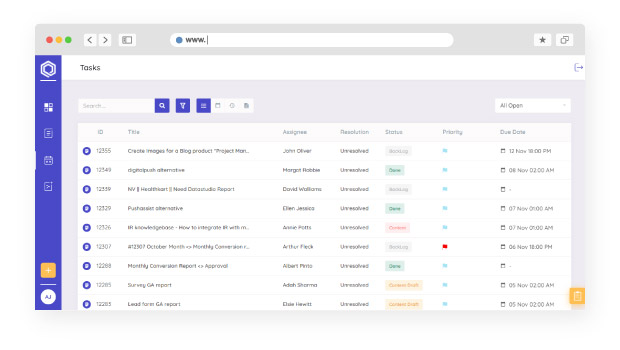What is Project Management: Definition and An Ultimate Guide
We all have ideas. These ideas can turn into the next big innovation. Perhaps, you might see the cars flying or find life on Mars. But, before all this, the first thing is to have a plan of action.
Plans help you create the path. They help you in understanding all the essential ingredients to make your ideas work. All these tasks, when integrated, are a form of project.
What is project management? Why should one have a set of project management strategies?
Are you ready to see the cars flying? But, let us start with the basics first. While there is no defined way of project management, there surely is a guide for streamlining the project process.
What is project management?

Why understand project management? Why not just directly start with the tasks? While it sounds boring to spend time on finding project management ways. But, it plays an essential role. One can easily do simple tasks. But, the major challenge sets in with complex projects.
Put down in simple terms; projects are ‘planned undertakings’. The management of these undertakings is defined as project management. It is a comprehensive process. Right from listing down the tasks to completion of the goal, the whole process involved is called project management.
Over the years, the project management systems have changed. So, if you are trying to figure out what project management is? Let us make it clear. Every project comes with its own set of challenges to fulfill. While some are easy, the others can be complex. It all boils down to the project management skills of the manager and the team. This also justifies the need to have a good understanding and knowledge of project management.
The lifecycle of project management
Every project involves several phases through which they are carried out. If one is well aware of these phases, one can easily understand the overall structure of project management. This also allows the managers to put their project management skills to best use. The several phases which make up the project management lifecycle are defined as follows.
1. Initiation
This is the kick start of any project. The initiation phase consists of:
1.1 Documentation:

It involves putting down the ideas and documenting them. The initiation phase lays out the project deliverables and the path of carrying it out. This step mainly involves sorting out all the paperwork for an easier workflow process. There are ample files required throughout the project process. Having everything in one place improves the accessibility and execution of the process.
1.2 Assembling the project team:

While initiating the project, the team needs to know their roles. Under this, the team comes together to define the project goals and the processes involved. With the project management skills that the team possesses, each one is allocated with the required job roles. This is like the garnering of resources.
1.3 Project office set-up:
In the case of a physical project, certain resources and equipment are required to carry out the project. The project office set-up depends on the project requirements. It involves assigning the location to the project manager and the support staff alongside.
2. Planning
No actions can take place unless there is an executable plan. Under this, the project is broken into chunks to understand the process better. Further, it also involves the visualization of the process.
2.1 Tasklist creation:
Tasks are the small goals that help you in achieving the final goal. They put the essence into every project. If the tasks are not aligned with the goals, the team will not know what to accomplish. Under this phase, a breakdown structure is created along with the priority list.
2.2 Managing finances:
This is one of the key factors in any project. Whether it be a short-term or long-term project, each of them requires resources. Managing finances is also a key project management skill. With a real-time dashboard using several project management software, the managers can calculate the cost involved. A specified budget helps you know what to spend on and what not to.
2.3 Risk management:

While planning the project, it is essential to minimize the risks. They are always threats and opportunities involved in every project. It is a good idea to analyze these factors beforehand. This helps in avoiding any miscommunications or changing things that aren’t under your control in the latter phases.
2.4 Project timeline:

Every project involves a set of deadlines to be followed. It is always a good idea to lay out the timeline of projects. You can Gantt charts to do so. They help you have an overview of the complete project and view them at a glance. Alongside, one can easily divide the project timeline based on milestones and phases.
2.5 Communication plan:

It is important to communicate effectively with the team for successful project execution. With the communication plan in place, the manager knows whom to contact. Alongside, it is also essential to keep the team updated and deliver the right information.
2.6 Task allocation:
The last and quintessential step of the planning phase is task allocation. Until the tasks are assigned, nothing comes to action. All the planning boils down to the performance of the team. One must do the allocation of tasks to the right member, depending on their project management skills.
3. Execution
The bulk of tasks take place during this phase. Once you have a plan in hand, it is important to execute it well. Alongside the monitoring and control of the work are necessary to track the progress. This allows the team’s performance to stay intact. The execution phase involves the following steps.
3.1 Task dashboard:

To ensure that the task is completed well, every step is to be taken care of. This not just involves task management but also monitoring and reporting. The project managers can do this with the help of task dashboards.
3.2 Cost:
Just planning a budget is half the job done. Executing the project without any surplus charges is what matters. It is essential to keep the expenditure well within the budget.
3.3 Time:

There are instances when the team members miss out on the deadlines. This calls for the need to keep track of time for enhanced productivity. It is essential to stay updated to keep up with the schedule.
3.4 Quality:
During project execution, the stakeholders have some set expectations. It isn’t just about delivering the project on time. Rather, it is about delivering value and quality with it. Depending on several metrics, you can understand how well the project is doing. In case of any issues, you can quickly resolve the problems.
3.4 Resources:
Resources are the need for every project. These include equipment, team, materials, and other things. It is essential to have everything sorted out for seamless process and task management.
3.5 Collaboration:

The execution process also consists of collaboration with other platforms and team members. There are several projects which are carried out online. The collaboration and integration of software make it easier to execute the project and complete the tasks efficiently.
4. Closing
In this phase, the final process is completed. The deliverables are handed over to the team. This phase includes the following parts.
4.1 Transferring of deliverables:
It involves handing over the expected project to the stakeholders with complete satisfaction. The customer must be provided with all the requirements. This marks the project completion.
4.2 Documentation reviews:
The project manager manages this process. Under this, the final contracts are closed, and all paperwork is completed.
4.3 Releasing the resources:
This basically involves discharging the team of their duties. Alongside this, any contracts and equipment involved are also released.
Conclusion:
To summarize, project management is extensive. It is not possible to figure out the complete process at once. The team learns throughout the process. Every project is unique and has something distinctive to offer.
With technological advancements, it is a good idea to opt for project management software. These not just help in making the process easier but also visualizing every step. While the process seems elaborated, if carried out well, the project can be completed easily.



